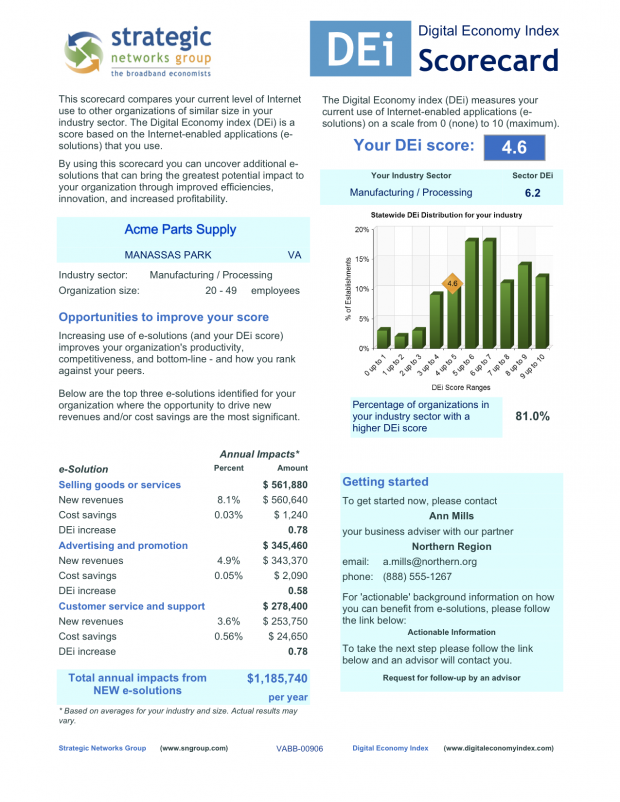Tools for Local Economic Development through Broadband
Preparing for Your Digital Future
SNG’s mission is to help communities and regions transform their local economic opportunities, quality of life, and access to essential services through broadband and digital infrastructure. We want to help elected officials, local leaders, government officials, investors, etc. avoid pitfalls, save time and money, and maximize community benefits as they prepare for a digital future. Below is a path forward and key questions SNG has learned of what it takes to move a locality through a digital infrastructure and transformation process.
What are the decisions your community needs to make?
SNG has over 20 years of experience with broadband and digital transformation in communities and regions, rural and urban, across North America, in Europe and Asia. We approach broadband as infrastructure and undertake digital transformation with a holistic and longer-term approach.
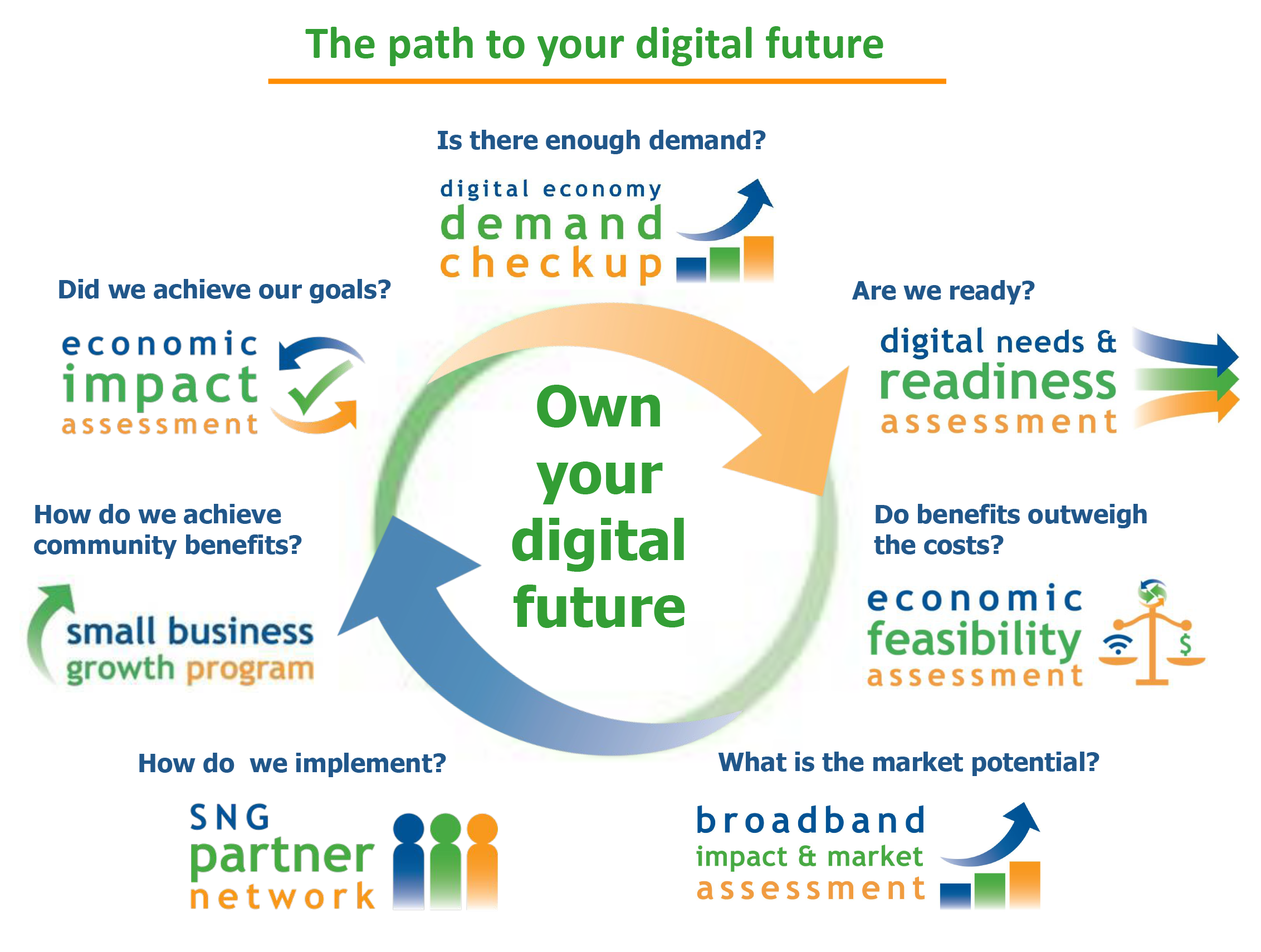
Like other infrastructure investments like roads, the drivers for broadband investments are economic and community benefits, not only financial. We invest in infrastructure for our future, for the long term. We invest in broadband and digital infrastructure because of economic impacts (job retention and growth, GDP and tax base impacts, etc.) and quality of life improvements for a locality.
“We know we need broadband, but where and how do we get started?”
SNG offers a suite of services to help you make the right decisions based on your needs and circumstances, no matter what stage you are at in the process. We have worked with network engineers and builders to develop a path forward that is streamlined, saving you time and money, so that your residents and businesses have the broadband they need to stay and thrive.
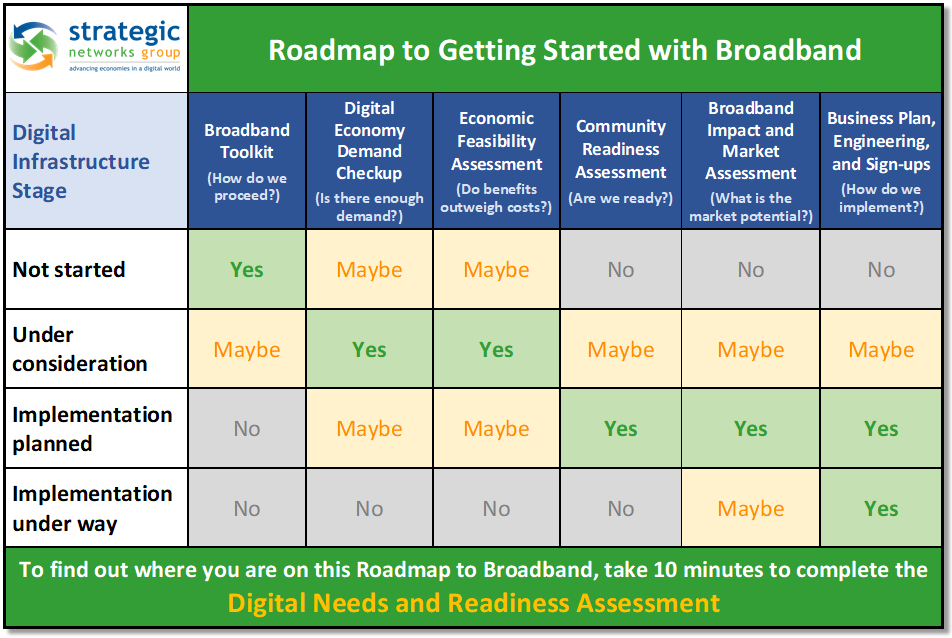
The first step for any type of investment is assessing the addressable market and analyzing whether expected returns on investment outweigh costs.
Based on our experience of what it takes to move a community, region, or state through a digital infrastructure and transformation process, below are questions decision-makers should be asking and next steps they should be taking when considering broadband and digital infrastructure investments.
Is there enough demand?

SNG’s Digital Economy Demand Checkup service provides SNG’s industry-leading digital economy metrics and Broadband Opportunities Roadmap for localities considering broadband and digital infrastructure projects. The service is designed to be a practical and cost-effective way for localities to see if there is an addressable market by gathering demand data directly from residents, businesses, and organizations. We help localities answer the question – do we have enough demand for a broadband investment?
Outcome: Understand the gaps and opportunities for broadband use in your market, understand the current state of broadband use and needs in your market, identify actual and potential demand for services across market segments, and assess the potential for driving demand for services and increasing revenues.
Are we ready?

SNG’s Digital Needs and Readiness Assessment helps determine if local stakeholders are committed and is the community ready to take-on broadband, digital transformation, and smart city initiatives? If not, what are the gaps that need to be addressed?
Objectively evaluating readiness can affirm strengths and reveal weaknesses that need to be addressed to ensure success. Engaging key community stakeholders in a readiness evaluation also uncovers different perspectives while involving those stakeholders in the process, leading to greater support and participation toward achieving your broadband goals.
While every community can go through this process on their own, SNG has applied our experience and methods to develop tools to facilitate the readiness evaluations. Our Digital Needs and Readiness Assessment is designed to easily engage community stakeholders in the process and provide a comprehensive readiness report to maximize your readiness and avoid unanticipated issues before they happen.
Outcome: Control over the process and assurance that the support, leadership, and resources are available to identify and implement priorities for broadband, digital transformation, and smart community initiatives.
Can we and should we invest – do benefits outweigh the costs?
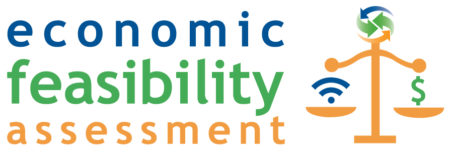
For assessing the investment case, SNG takes a cost-benefit analysis approach. We start with assessing community benefits from investing in broadband, digital infrastructure, and smart community initiatives. At SNG we call this the economic case for investing in broadband where community benefits are significantly greater than a private sector business case, as with road or electrical infrastructure. The example of Ammon, Idaho, proves that it is possible for a locality to own their digital future while also allowing multiple providers to provide competitive, robust internet services. We then asses existing and required budgets to deliver civic, health, educational, etc to the locality. We help clients answer the question – do benefits outweigh costs? If yes, community investments can be self-financed.
The Economic Feasibility Assessment is a pragmatic alternative to longer and more costly feasibility studies. It is foundational to a sustainable project and the first step in planning because it answers the key question: Do the benefits of this broadband infrastructure investment outweigh the costs for our community / region?
The Economic Feasibility Assessment can up-front assess whether community benefits outweigh the costs of investing in broadband. This is critical when unserved and underserved areas do not represent enough of a business case for private sector investment in broadband (where revenues exceed capital and operational costs). Like other infrastructure investments, the significant long-term community benefits from broadband are drivers can make an economic case for public investment in broadband.
Outcome: Data points for every financial decision the community must make, and clarity on the economic case for investing in digital infrastructure. SNG’s assessment saves time and money over the traditional broadband feasibility approaches that are typically taken and often fall short of meeting the needs of local leaders.
What is the market potential?
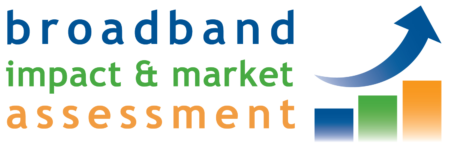
SNG’s Broadband Impact and Market Assessment helps leaders understand how residents and businesses are connected, using and benefiting from broadband – as well as capturing demand new or expanded services.
If the Economic Feasibility Assessment shows that benefits outweigh the costs for investing in digital infrastructure and there is a local decision to move forward, then the next steps is a Broadband Impact and Market Assessment that would:
- Document needs, current connection types, speeds (with speed test), utilization, and benefits
- Assess potential demand (input for business planning and design) and associated potential economic growth and community benefits – this can be given to the elected officials to make a decision on whether to go-forward
- Provide an economic baseline from which economic and community benefits can be measured and quantify impacts on new jobs, business growth, GDP growth, tax base growth, etc.
- Provide recommendations on possible Broadband Improvement Districts and how to target key user groups to drive demand – this can be packaged appropriately and given to the network designers, builders and operators to prepare bids.
SNG uses our proprietary eSolutions Benchmarking which is a world-leading, one-of-a-kind online tools that collect over 120 metrics on broadband utilization, impacts, needs, barriers, equipment, readiness, skills, and more. SNG’s methodology is personalized to your project. We work in full collaboration with our client and their local stakeholders to maximize participation and ensure that the data collection process brings back as many insights as possible. SNG gathers more and deeper data from more people than any other broadband data collection provider – with tools that will provide deep and meaningful analysis for strategy development.
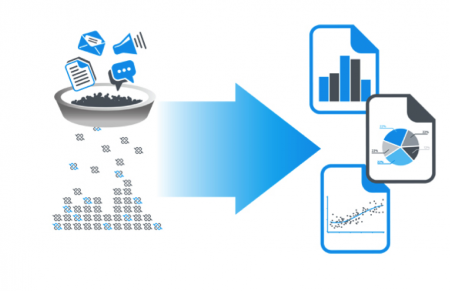
Outcome: Empirical evidence based on whether residents and businesses are getting the broadband they are paying for, the quality of broadband they need, and assess broadband market demand in terms of the potential impact new services would have on broadband network revenues and the local economy.
How do we implement?

SNG’s assessment of community infrastructure and technology assets is necessary for planning and identifying needed partners – What do we have? What do we need? SNG uses market data from Broadband Impact and Market Assessment assessment for prioritizing and scaling implementation, as well as defining needs and who can address those needs from our network of trusted partners.
Outcome: Investment cost, partner definition, system design and engineering, operations and maintenance plans, organizational structure, business planning, etc. that will provide the community the platform for digital transformation and innovation
How do we pay for it?

SNG provides options for financing, self-financing, and pursuing other funding sources for investments in broadband, digital infrastructure and transformation. This includes Broadband Improvement Districts and other implementation options and contracting of firms to implement.
Calculating the Economic Impacts from Meaningful Use of Digital infrastructure and Smart City Services
Strategic Networks Group’s Broadband Economic Impact Model estimates the potential economic growth from increased broadband use. The model uses quantitative analysis to reveal the potential economic impacts from broadband for your region based on of the most impactful broadband utilization scenarios. Powering this model is SNG’s extensive research among tens of thousands of businesses that have reported Internet utilization and accompanying financial impacts.
Outcome: With benefits outweighing costs, stakeholder and community buy-in, market demand assessment, the community can make a case for moving forward and financing as a solid community investment.
How do we achieve community benefits?

e the digital infrastructure is in place, community benefits are achieved through driving adoption and utilization. SNG’s Small Business Growth Program drives demand for digital infrastructure and online applications by engaging local businesses, organizations, and households.

The Small Business Growth Program (SBGP) is program is designed to help individual businesses take the specific steps they need to maximize broadband’s benefits for growth. In short, this program drives both economic development and network uptake. The SBGP provides participating businesses with a scorecard containing recommended Internet-enabled applications to drive efficiencies and sales.
DEi Scorecards
Available with the eSolutions Benchmarking and a standard component of the Small Business Growth Program, the Digital Economy index (DEi) Scorecard is a ground-breaking, individualized tool that helps network managers and economic development professionals increase broadband adoption and utilization by demonstrating the economic impacts of broadband utilization in terms of ROI directly to businesses and organizations. Scorecard recipients benefit from unique insights on how to improve their daily operations by implementing new digital solutions.
As part of our data collection process, SNG asks businesses and organization how they are using a range of 17 categories of Internet enabled tools and processes (eSolutions), from which we can calculate the SNG Digital Economy index (DEi) for each business or organization. It’s a simple score from 0 to 10 that allows us to tell a business where it stands among its peers and how they could benefit more from the digital economy.
Generated through SNG’s online tools, the DEi Scorecard is a one page report delivered to every business and organization that participates in data collection. On the report, they will see their Digital Economy index score based on current use of broadband, and how they compare to organizations of the same size and industry sector. With each Scorecard comes three suggested eSolutions for immediate adoption for greatest impact. Recommendations are based on industry averages collected by SNG, the quantified impact in terms of revenues and cost savings these tools would have if they were implemented.
Finally, the contact information of one manager among an SNG local partner is included to help support with questions on how to implement new e-solutions that will increase its productivity and service quality, providing extended insights, documentation and ongoing support, making the DEi Scorecards the perfect personalized way to mobilize businesses and organizations into your regional development initiatives.
Outcome: Community benefits are realized from the use of technology and digital infrastructure. With a pragmatic process to drive adoption and use by personaliz
Did we achieve our goals? How do we measure outcomes? What’s next?
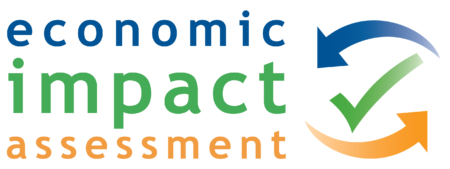
Once the digital infrastructure is in place and efforts made to drive utilization, how will you know that those investments are achieving the desired outcomes? With our proprietary metrics and tools SNG’s Economic Impact Assessment measures outcomes and quantifies community impacts on an ongoing basis, you can track progress towards goals, as well as make necessary adjustments.
Outcome: Documented outcomes and community impacts from the digital initiatives reinforce the value of investments, solidify community buy-in, and increase the ability to optimize ongoing plans and target evolving outcomes based on empirical data.
Communication and Facilitation Skills
SNG applies its experience and communications skills in developing outreach and educational materials, engaging stakeholders in planning processes, conducting planning meetings, and developing action plans that reflect stakeholders’ values and aspirations in pursuing local and regional opportunities for economic development through broadband.
The SNG team has extensive experience in analyzing and synthesizing both qualitative and quantitative information and in developing documents and narratives that convey key concepts and directions to stakeholders and third parties, elected officials, and the public.

